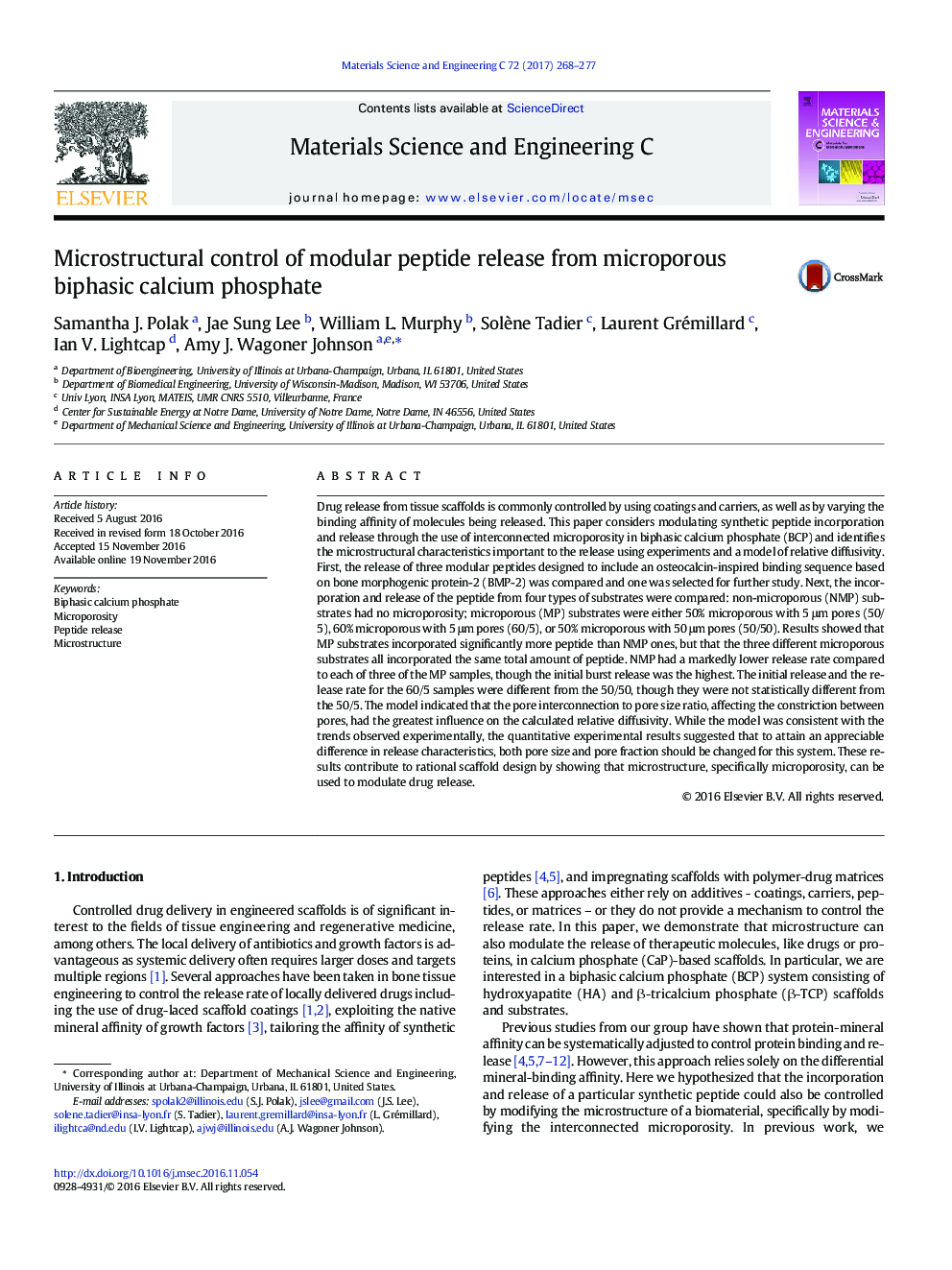| کد مقاله | کد نشریه | سال انتشار | مقاله انگلیسی | نسخه تمام متن |
|---|---|---|---|---|
| 5435203 | 1509149 | 2017 | 10 صفحه PDF | دانلود رایگان |
- Microporosity in BCP was used to control peptide incorporation and release.
- Volume fraction and pore size influenced release, but not absorption.
- A model suggested that the constriction between pores was important to release.
Drug release from tissue scaffolds is commonly controlled by using coatings and carriers, as well as by varying the binding affinity of molecules being released. This paper considers modulating synthetic peptide incorporation and release through the use of interconnected microporosity in biphasic calcium phosphate (BCP) and identifies the microstructural characteristics important to the release using experiments and a model of relative diffusivity. First, the release of three modular peptides designed to include an osteocalcin-inspired binding sequence based on bone morphogenic protein-2 (BMP-2) was compared and one was selected for further study. Next, the incorporation and release of the peptide from four types of substrates were compared: non-microporous (NMP) substrates had no microporosity; microporous (MP) substrates were either 50% microporous with 5 μm pores (50/5), 60% microporous with 5 μm pores (60/5), or 50% microporous with 50 μm pores (50/50). Results showed that MP substrates incorporated significantly more peptide than NMP ones, but that the three different microporous substrates all incorporated the same total amount of peptide. NMP had a markedly lower release rate compared to each of three of the MP samples, though the initial burst release was the highest. The initial release and the release rate for the 60/5 samples were different from the 50/50, though they were not statistically different from the 50/5. The model indicated that the pore interconnection to pore size ratio, affecting the constriction between pores, had the greatest influence on the calculated relative diffusivity. While the model was consistent with the trends observed experimentally, the quantitative experimental results suggested that to attain an appreciable difference in release characteristics, both pore size and pore fraction should be changed for this system. These results contribute to rational scaffold design by showing that microstructure, specifically microporosity, can be used to modulate drug release.
Journal: Materials Science and Engineering: C - Volume 72, 1 March 2017, Pages 268-277
